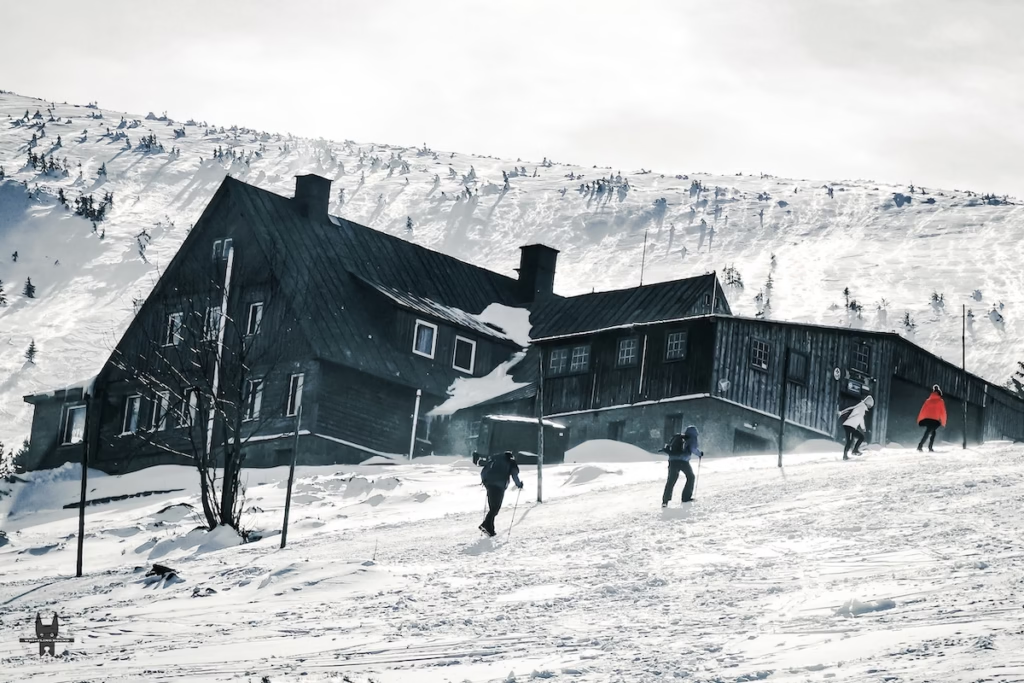Northern Lights have been overly kind to the residents of planet Earth in the 2023 Aurora season. The season might be officially over in the Arctic, but it seems the Lights aren’t done with us yet.
The twist here is that mid-latitude regions like mainland Europe and the USA are the beneficiaries. Reason? Mid-April onwards, the nights in higher latitudes get too bright to display the Aurora Borealis. Eventually, the midnight Sun phase reaches the Arctic in June, and they go nightless for weeks.
Northern Lights aren’t visible in the Arctic region for roughly four months (mid-April to mid-August). That doesn’t mean there’s no chance of significant Solar Activity, Geomagnetic Storms or CME! It only implies the night is just too bright to reveal the Auroras.
What is a Geomagnetic storm, and why has it been occurring at extreme magnitudes lately?

A geomagnetic storm occurs when the Earth’s magnetic field is disturbed by solar activity, such as solar flares or coronal mass ejections.
Simply put, the Earth’s magnetosphere has a magnetic field that shields us from the particles emitted by the sun.
When a CME or high-speed stream released by the sun arrives at the Earth, it interacts with the magnetosphere at the very beginning. If the arriving solar magnetic field is directed southward, it interacts strongly with the oppositely oriented magnetic field of the Earth.
This results in the Earth’s magnetic field opening up in layers like an onion, which allows the charged solar wind particles to stream down the field lines. The solar particles eventually hit the atmosphere over the poles, resulting in the magical Aurora Borealis. For the Earth’s surface, a magnetic storm is a quick drop in its magnetic field strength, which lasts roughly 6 to 12 hours. The magnetic field slowly recovers in a few days. A geomagnetic storm creates the most intense and vibrant display of the Aurora Borealis.
Approaching closer to Solar Maximum (2025), such powerful solar activities will only increase. Exactly like those witnessed at the end of the previous three months, back-to-back.
3 days ago, a massive geomagnetic storm (G4-G5) ripped into Earth’s magnetosphere and lit the dark skies (cloudless) in mid-lower latitudes. A storm so powerful in magnitude that it brought shades of purple, pink, and blue auroras down south to the US-Mexico border (+29.5N). Northern Lights coming this far opened up a unique opportunity for people in Central, West and South Europe, the entire USA, Russia, Kazakhstan and even China to witness this extraordinary event.
Aurora sightings was reported from parts of Western Kazakhstan (+49N), Berlin(+52N), Spain (+34N), South California (+35N), Podkarpackie in South Poland(+50N), South Denmark(+55N), New Zealand(-40S), and Tasmania(-42S).
It was one of the strongest geomagnetic storms in decades that cascaded to much lower latitudes. The back-to-back geomagnetic storms on Feb 26th, March 24th, and April 24th in 2023 have amazed scientists, night-sky enthusiasts (like me), and aurora hunters. Wondering what the 2023-24 Aurora season has in store for us!
So, what is Solar Maximum? What is the reason for causing big Northern Lights?
Solar Maximum is a period in the solar cycle when the sun’s activity is at its highest. It occurs in the years when sunspots are most numerous. During solar maximum, activity on the sun and the effects of space weather on Earth rise significantly.
Over the last 300 years, the average number of sunspots has regularly formed and dissipated in an 11-year (on average) solar or sunspot cycle. Hence, establishing the solar cycle!
Near solar maximum, the sun’s activity is characterised by increased solar flares, coronal mass ejections, and other solar activity. Going forward, solar activities will only intensify, with solar maximum revealing several hundred sunspots on any day.
Besides resulting in magnificent Auroras, Solar Maximum can have other adverse effects on Earth, which include disruptions to communication systems, power grids, and satellite operations.
Through this blog, I will try to explain some usual complex terms, parameters and metrics you might have read from Aurora forecasting sites like Spaceweather Live,
National Oceanic and Atmospheric Administration (NOAA), scientists and several enthusiasts sharing across digital and social media.
Understanding the Interplanetary Magnetic Field (IMF), the sun’s magnetic field, and the Bt value

The interplanetary magnetic field (IMF) plays a major role in the way the solar wind interacts with the Earth’s magnetosphere. So, how does the IMF impact auroral activity on Earth?
When the sun reaches maximum activity, about Solar Maximum, several sunspots filled with magnetic field lines appear. These field lines are often hundreds of times stronger than the surrounding dipole. That is why the magnetic field around the Sun is complex, with disturbed field lines. But the Sun’s magnetic field isn’t meant to stay around it. The solar wind travels around the Solar System until it reaches the Heliopause. The Heliopause is the zone where the solar wind comes to a stop and where it collides with the interstellar medium. As the sun turns around its axis (once in about 25 days), the interplanetary magnetic field has a spiral shape, which is called the Parker Spiral. (Source)
Bt Value
The Bt value represents the force of the interplanetary magnetic field. It is a combination of the magnetic field strength in the north-south, east-west, and towards-Sun vs away-from-Sun directions. The higher the value, the better the geomagnetic conditions. When the Bt exceeds 10nT, it is a moderately strong total interplanetary magnetic field, while the strong values begin at 20nT, and a very strong total interplanetary magnetic field when values are 30nT plus. The unit nT stands for Nanotesla (nT).
Bz Value
The interplanetary magnetic field is a vector quantity with a three-axis component. Bx & By axes are oriented parallel to the ecliptic and are not important for auroral activity. The Bz value is perpendicular to the ecliptic and created by waves and other solar wind disturbances.
Bz is the solar wind’s magnetic orientation in the up/down direction. Although an Aurora can happen with a positive Bz, a negative Bz is generally better.
A higher Bz indicates a stronger impact on the Earth’s magnetic field. If the Bz is positive (northward), the Earth’s magnetic field will block most solar wind, and geomagnetic storming is unlikely. When Bz is negative (southward), the coupling to the Earth’s geomagnetic field is strongest. Hence, brighter Auroras. A Bz value of even -10 nT can bring good Auroras. The geomagnetic storm on the 23rd of April had a Bz value below -30 nT
What are Coronal Mass Ejections (CMEs) and Solar Flares
The outer solar atmosphere, the corona, is structured by strong magnetic fields. Where these fields are closed, often above sunspot groups, the confined solar atmosphere can suddenly and violently release bubbles of gas and magnetic fields called Coronal Mass Ejections. A large CME can contain a billion tons of matter ready to be accelerated at several million miles per hour in a spectacular explosion. (Source)
The eruptions of plasma and magnetic fields from the sun’s corona can lead to geomagnetic storms when they interact with the Earth’s magnetic field. These storms can cause breathtaking auroral displays, captivating observers with dazzling colours and dynamic movements.
Solar flares can be described as an intense explosion of radiation released because of the magnetic energy dissipating from the sunspots. Solar flares are visibly the brightest areas on the sun and also the solar system’s largest explosive events. They can last from minutes to hours.
Solar flares are mostly recognised by the photons (light) released at almost every wavelength of the spectrum. The primary ways to monitor flares are in X-rays and optical light. Flares are also the ideal spots for the acceleration of particles (electrons, protons, etc).
According to the Space Weather Prediction Centre of the National Oceanic and Atmospheric Administration (NOAA):
“Compared to solar flares — bursts of electromagnetic radiation that travel at the speed of light, reaching Earth in just over 8 minutes — CMEs travel at a more leisurely pace, relatively speaking. At their highest speeds of almost 1,900 miles per second (3,000 kilometres per second), CMEs can reach Earth in about 15 to 18 hours whilst slower CMEs travelling around 155 mi/s (250 km/s) can take several days to arrive.”
The slow-travelling CMEs can create havoc on power grids, telecommunication networks and orbiting satellites and expose astronauts to dangerous radiation. At the same time, CMEs come as a blessing for skywatchers worldwide as they are capable of triggering impressive aurora displays visible even at lower latitudes.
Does all solar activity impact Earth? Why or why not?
Solar activity associated with Space Weather can be divided into four main components:
Solar Flares, Coronal Mass Ejections, High-speed Solar Wind, and Solar Energetic Particles
Solar flares impact Earth only when they occur on the side of the sun facing the Earth. Because flares are made of photons, they travel out directly from the flare site. Therefore, if the flare is visible, it can impact us.
Coronal mass ejections, also called CMEs, are large clouds of plasma and magnetic fields that erupt from the sun. These clouds can erupt in any direction and continue the same way, hurtling right through the solar wind. Only when the cloud is directed towards the Earth, the CME hit the Earth, causing impacts.
High-speed solar wind streams come from areas on the sun known as coronal holes. These holes can form anywhere on the sun, and usually, when they are closer to the solar equator, the winds produce an impact on the Earth.
Solar energetic particles are high-energy charged particles, primarily thought to be released by shocks formed at the front of coronal mass ejections and solar flares. When a CME cloud shoves through the solar wind, high-velocity solar energetic particles can be produced, and because they are charged, they must follow the magnetic field lines that fill the space between Sun and the Earth. Therefore, only the charged particles that follow magnetic field lines that intersect the Earth will result in impacts. (Source)
More explained by Heliophysicists here:
What is the difference between the G index and the Kp index?
Expressed in Nanotesla per minute, the G index is the rate of change of the Earth’s magnetic field over three hours. Primarily used by space weather forecasters to monitor the potential for geomagnetic storms, the G index is often used with other indices to provide a complete picture of the Earth’s magnetic activity.
The kp index is the average deviation of the Earth’s magnetic field over a three-hour duration. It is measured on a scale of 0 to 9 and is widely used for tracking and predicting geomagnetic storms. The kp index can determine the potential of auroral activity in a given region.
To summarise, the G index is the rate of change of the Earth’s magnetic field, while the Kp index is the average deviation of the Earth’s magnetic field. Both indices are crucial in monitoring geomagnetic and auroral activity.
What causes stronger Auroras around the equinoxes?
Auroras are stronger around the equinoxes because of the orientation of the Earth’s magnetic field. During the equinoxes, the Earth’s magnetic field is most aligned with the sun’s. It allows a more direct and powerful flow of charged particles into the atmosphere.
This alignment results in a higher probability of geomagnetic storms and more intense Northern Lights displays. Equinoxes occur twice a year, around March 20th and September 22nd.
Some frequently used terminologies in the context of solar and auroral activities:
1. Geomagnetic Latitude is a measure of a location’s magnetic proximity to Earth’s magnetic poles. The closer the location to the magnetic pole, the higher its geomagnetic latitude.
It determines the probability of auroras occurring at a particular location. Higher geomagnetic latitudes have a higher likelihood of seeing the Northern Lights.
The angle between the Earth’s magnetic field lines and the Earth’s equatorial plane determines the latitude, which ranges from -90 to +90 degrees.
2. Magnetic Midnight is the time of night when the Earth’s magnetic field is most aligned with the direction of the sun’s magnetic field.
It is the optimal time for viewing the Northern Lights because this alignment allows for the most direct flow of charged particles into the atmosphere, resulting in more intense and vibrant Auroras.
Despite its name, magnetic midnight doesn’t always occur at midnight and can vary depending on the observer’s location and the time of year.
3. The magnetosphere is a shield which protects and guides Earth from the charged particles in the solar wind.
4. Aurora Oval is the ring-shaped region around the magnetic poles where the Northern Lights are most frequently visible. It is typically centred around the magnetic poles and shifts in location and intensity depending on solar activity.
The oval covers a major portion of the Arctic and Antarctic regions, including places like Norway, Iceland, Finland, Canada, Alaska, Greenland, and Antarctica. These places are also considered the best places to watch the Northern Lights in the world. The tilt of the Earth’s magnetic field, solar wind conditions, and geomagnetic activity are the various factors affecting the size and location of the oval.
5. The Auroral Zone is a region in the Earth’s atmosphere where auroras are most likely to occur. It is typically centred around the magnetic poles and can shift in location and intensity depending on solar activity.
This region includes parts of the northern hemisphere, such as Alaska, Northern Canada, Greenland, Iceland, Norway, Sweden, Finland, and Russia, as well as parts of the southern hemisphere, including Antarctica and southern regions of Australia, New Zealand, and South America.
6. Auroral Substorm is a sudden and explosive release of energy from the Earth’s magnetosphere, unleashing a display of vibrant and dynamic auroras.
7. Solar Wind is a stream of charged particles, including protons and electrons, flowing outwards from the sun. It interacts with the Earth’s magnetic field, initiating the Northern Lights.
8. Plasma is a state of matter in which atoms are stripped of their electrons and become charged particles. It is the dominant matter form in the Earth’s magnetosphere and is responsible for the creation of Auroras.
9. The Polar Cap is a domain surrounding the magnetic poles, where the magnetic field lines open up to the solar wind. It allows a stream of charged particles to flow unhindered into the Earth’s atmosphere, creating an auroral ring.
10. The ionosphere is a region of the Earth’s atmosphere that contains ions and free electrons. It plays a critical role in the propagation of radio waves and communication systems and is affected by solar activity and geomagnetic storms. The Ionosphere’s response to these phenomena can lead to disruptions in communication systems and create challenges for scientific research.
Note: Most of the definitions and terms have been borrowed from the Spaceweather Live, NASA, & NOAA websites.
The night sky, sun, and Aurora Borealis are some pristine things that have ever happened to Earth. Some sustain life, while other makes you feel grateful. If this article explained your questions or sparked your curiosity, please share it with your connections.
Some Aurora FAQs
1. What is Aurora Season?
The time of the year when the Northern Lights are most visible. It varies depending on the location. In Northern Norway, for example, the Aurora season typically runs from late September to early April, when the nights are the longest and darkest. During this time, the chances of witnessing the Northern Lights are higher, making it the ideal time for Aurora chasers to plan their trip.
2. What does the visibility of the Northern Lights depend on?
The visibility of the Aurora also depends on factors such as weather conditions, light pollution, and the observer’s location with the magnetic poles(high latitudes).
3. What are the most common Northern Lights colours?
Hues of greens, pinks, purples, and blues are generally the Northern Lights’ colours.
Still got some unanswered questions about Northern Lights?
Further read: All You Must Know About Northern Lights in Rovaniemi – Nature’s Impressive Spectacle in the Arctic Land

Don’t forget to leave your thoughts in the comments below.
Want to experience the Northern Lights in real life?
Email me at whistlinghound@gmail.com, and I can help you plan a trip to the Arctic Circle when the Aurora season starts in September. To receive my other updates, join me on Facebook & Instagram. Thank you for reading!
Share this:
- Click to share on Facebook (Opens in new window) Facebook
- Click to share on LinkedIn (Opens in new window) LinkedIn
- Click to share on Reddit (Opens in new window) Reddit
- Click to share on X (Opens in new window) X
- Click to share on WhatsApp (Opens in new window) WhatsApp
- Click to email a link to a friend (Opens in new window) Email






4 thoughts on “A Curious Dive into the World of Aurora Borealis & Solar Storm”
Every time I read a new post, I feel like I’ve learned something valuable or gained a new perspective. Thank you for consistently putting out such great content!
Thanks!
I appreciate your response!
Thanks a lot! I appreciate it 🙂